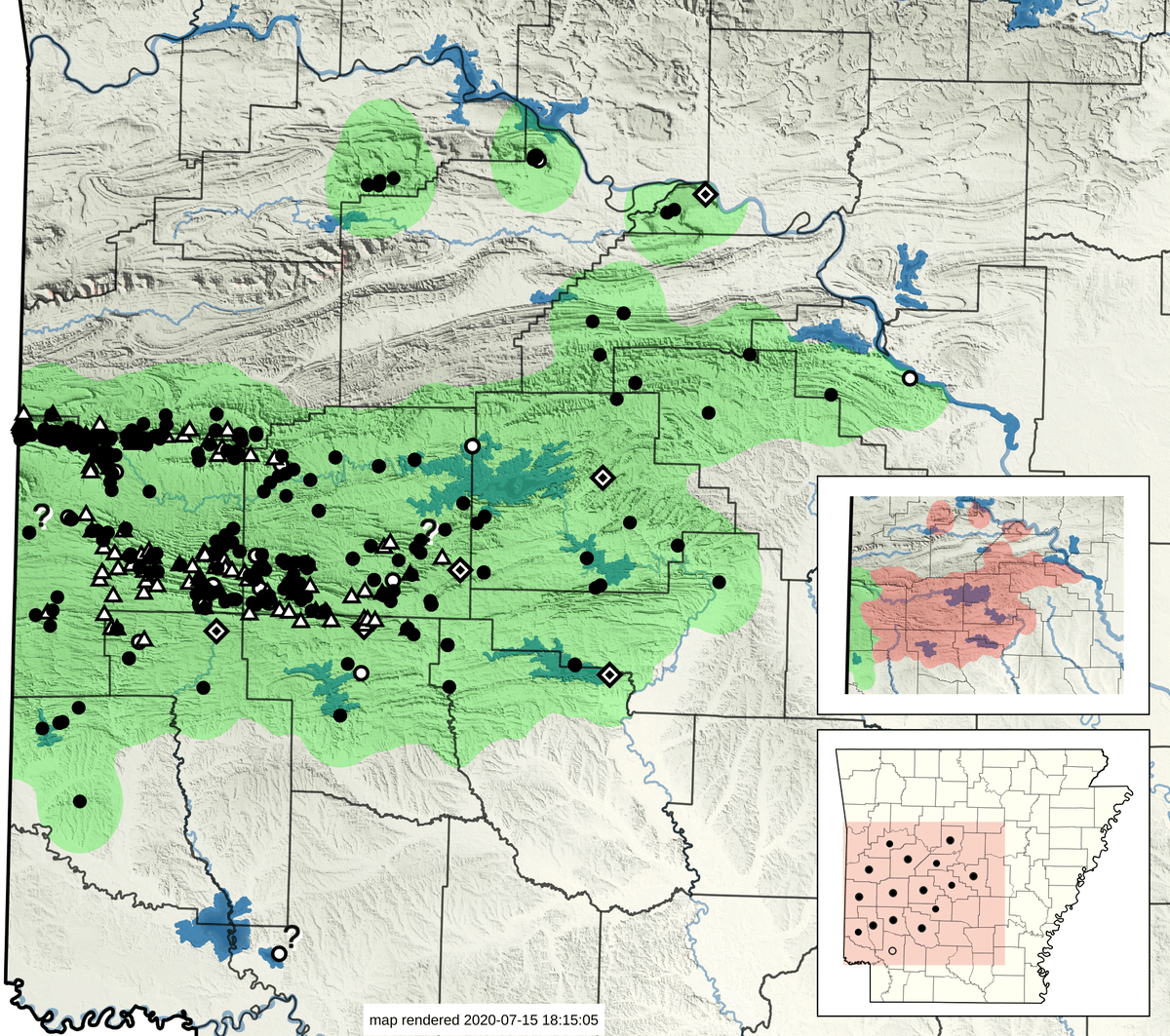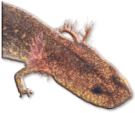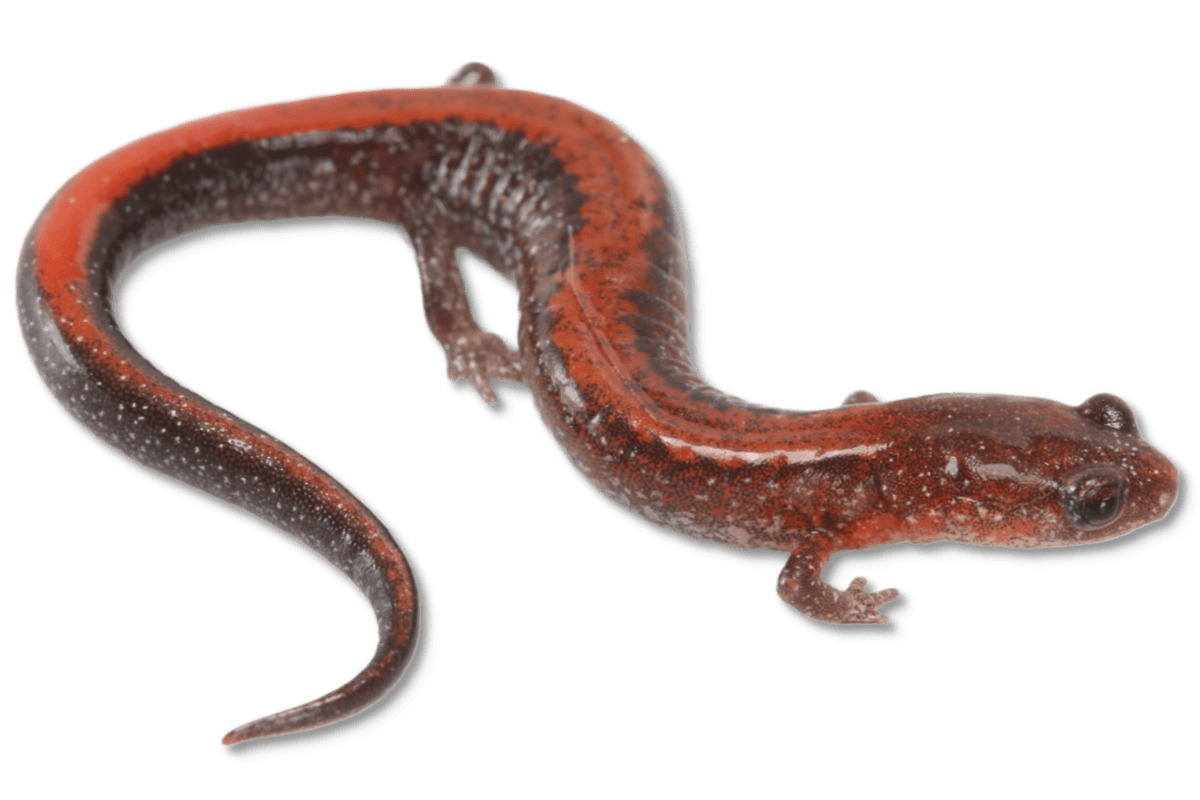Arkansas Herpetological Atlas 2019
This species is represented by 2,660 records from 38 sources: 2,463 museum ( ), 0 literature (
), 0 literature ( ), 106 research (
), 106 research ( ), and 85 observation (
), and 85 observation ( ), with 6 additional Trauth et al. (2004) locality points remaining unsourced (
), with 6 additional Trauth et al. (2004) locality points remaining unsourced ( ). It has been museum vouchered for 15 of 75 counties (
). It has been museum vouchered for 15 of 75 counties ( ), with 1 additional counties having other forms of reported occurrence (
), with 1 additional counties having other forms of reported occurrence ( ). Years of collection range from 1903 to present.
). Years of collection range from 1903 to present.
This species occurs throughout much of the Ouachita Mountains, but is apparently less common or even absent in the northern portions of this ecoregion. Additional isolated occurrences from the Arkansas Valley are documented from Mount Magazine, Logan County (none since 1983); Mount Nebo, Yell County; and Petite Jean Mountain, Conway County. Thesing et al. (2016) identified five geographically distinct clades, with two occurring in Arkansas (inset): Western Ouachitas (■) and Eastern Ouachitas (■). However, these have not been proposed for species status. Questionable records from northcentral Arkansas (MPM 14664-14665 from 1976; not shown) are likely misattributed P.
angusticlavius, with disjunct populations of P. serratus in Missouri at least 60 km to the northeast (Daniel and Edmond, 2020). A questionable record from Hempstead County (ANHC AAAAD12160*020 from 1998) may be the result of misidentification of Eurycea paludicola.


























































